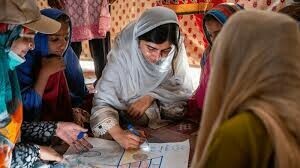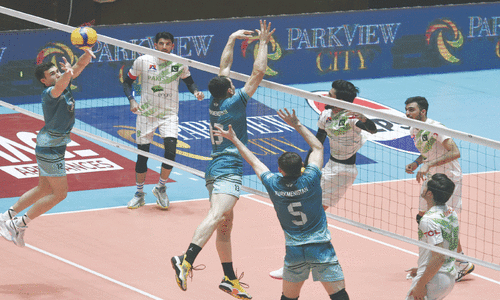
BEIJING: As vice-president of the International Council of Museums (ICOM), An Laishun is well placed to talk about how Chinese museums have grown in the past decades. He clearly remembers the days when he started working with the international museum community in 1986.
“We felt quite special then,” he says. “Museums abroad then looked at Chinese museums with a kind of awe because China had just opened to the outside world.”
It was a good thing, he says, because the curiosity meant that the foreign institutions wanted to know more about Chinese cultural heritage and gradually established links.
ICOM, founded in 1946 in Paris, is the world’s most important non-governmental organisation for museum professionals.
“Now, China’s [cultural] heritage sector plays a very dynamic and active role in this body,” says An.
Currently, ICOM’s only international training centre for museum studies is at the Palace Museum in Beijing, also known as the Forbidden City.
An says that China’s global influence in the field is mainly due to the fact that the country is the fastest-growing in terms of museums.
According to the statistics from the State Administration of Cultural Heritage, there were 3,866 museums on the Chinese mainland as of 2012, and the number grew to 4,873 by 2016, which means a new museum opened in China every one and half days.
The administration also says Chinese museums now annually attract 900 million visits.
Wider attention
Over the past five years, museums which previously did not attract much media attention have been increasingly placed in the spotlight.
For instance, there have been reports of long queues — even overnight ones — of visitors waiting to catch a glimpse of several important ancient Chinese paintings like ‘Along the River During the Qingming Festival’ and ‘A Panorama of Rivers and Mountains’, when they were exhibited at the Palace Museum.
National Treasures, a TV show about 27 cultural relics from nine Chinese museums — has gone viral.
At the same time, the three-episode TV documentary Masters in the Forbidden City has turned relatively unknown cultural relics restorers into superstars.
Ma Xiaolin, director of the Henan Museum in Zhengzhou, and one of the nine participants in National Treasures, says: “The items which appear in the shows are now the stars. We cannot simply put labels in front of the exhibits. A museum must do more work.”
Consequently, exhibitions are being designed in more approachable ways.
For instance, in the Palace Museum, general displays of its Chinese paintings are being replaced by exhibitions on specific themes. Many smaller local museums are working with the bigger ones on touring exhibitions based on specific topics and stories.
Speaking about the new focus for museums, An says: “They can put their collections, exhibitions, education programmes and social activities all in one place. This provides the general public with an opportunity to appreciate and understand the significance of the cultural heritage, and focus on creativity at the same time.”
Ma, who also wants exhibitions to focus on children, says: “Students often tell me that they are terrified by some of the artefacts (referring to jinlyu yuyi — a suit of burial clothes made of jade and sewn with gold wire).
“This should prompt us to do more work, and make our exhibitions more approachable,” he says.
He Yun’ao, a professor of history at Nanjing University, says museums and exhibition halls, which are designed for children, will be a focus in the next phase of development.
Despite the growing number of Chinese museums, the sector is experiencing “growing pains”, as An calls them.
“Building museums is not like constructing houses. It’s a systematic effort, starting from what to collect and how to nurture talent,” he says.
An says museum expertise is sorely lacking in China. There are less than 50 universities in China with museology majors, he says.
According to him, setting up a double major for museology — for fine art or history students — could be one solution.
A commonly asked question to Chinese museum professionals is: why does China lack a national museum to house collections from other civilisations like the British Museum or the Louvre in Paris?
Professor He’s response is: “Many foreign items housed in Western museums were collected due to historical reasons. And, many of them were illegally acquired. This is impossible to replicate, but Chinese people still need to better understand world history.”
He sees more exchanges with overseas museums as one solution. But, he says, only once Chinese museums gain financial strength can they be more active in collecting foreign treasures. — China Daily
Published in Dawn, March 14th, 2018










































Dear visitor, the comments section is undergoing an overhaul and will return soon.